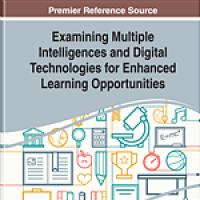Multiple Intelligences and Digital Learning Game Design: How to Consider the Intelligences of Players?

Empirical research that draws a framework on how the theory of MI could be incorporated in (learning) games is non-existent. Furthermore, the theory of MI fits well into the concept of individualization, as it distinguishes between individuals in terms of their abilities. In light of this, the chapter reports on the first evidence-based set of mappings between this theory and fundamental constructs of games known as mechanics. These mappings can be utilized by designers in the individualization paradigm of player-centered game design as guidelines on what mechanics to include in their design when targeting an audience with specific MI profiles. Such individualization can potentially positively affect the game experience of players while establishing the proper frame for affecting learning. As such, these mappings, available in form of a recommendation tool, act as guidelines on how to design (learning) games while considering the intelligences of the target audience.
Publication Reference
Sajjadi, P., & De Troyer, O. (2020). Multiple Intelligences and Digital Learning Game Design: How to Consider the Intelligences of Players? In Examining Multiple Intelligences and Digital Technologies for Enhanced Learning Opportunities (pp. 41-64). IGI Global.

